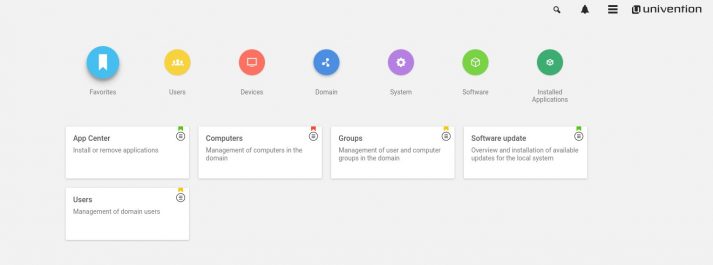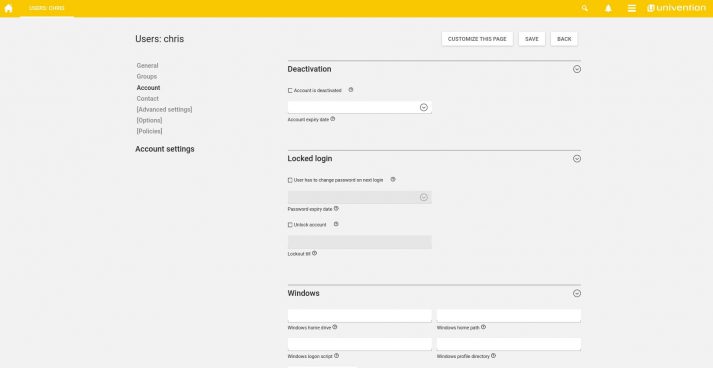
Would you like some valuable tips on how to increase network performance and user data availability when using Windows clients together with UCS?
Thinking about user data, many of us admins immediately understand that questions about the issues of backups, privacy, and availability, no matter whether across different machines or outside the office, can create us a considerable headache. But fortunately there are solutions in place and in this article I want to cover two of them: Roaming Profiles and Folder Redirection, arguably the most popular solution to the problem.
This time, I want to examine the features roaming profiles and folder redirection more closely, because these are often employed to solve above issues when using Windows clients together with UCS. However, most administrators are not always sure where one of these two features ends and where the other starts. So let me give you here some advice on how to best set them up in UCS and employ them , because I love to help you optimizing your IT infrastructure and providing your users with a smooth experience.
What are Roaming Profiles?
Let us first look at what profiles in general and roaming profiles in particular are.
Your Windows profile
When you log in to your Windows account, you know for sure that your icons are always in the same place and your background picture is the same as the last time you logged out. These settings are the core of your Windows profile. In-depth, they are all made up of hidden files and folders deep located within your home directory, namely the app data folder.
It is only when using roaming profiles that you can synchronize a userprofile between a client and the server.
Roaming profiles
If you activate roaming profiles, you will not only synchronize your standard icons and background picture as mentioned above but also the visible folders within your home directory, such as the ‘downloads’ or ‘documents’ folders.
While this is often seen as handy for small environments, this feature is indeed more of a concession to manufacturers of Windows Software who follow the Windows 9x-based ideas of saving settings inside the documents folder instead of the proper ones. The downside of this practice is that by definition the profile has to be copied entirely before a user can complete the login or logout. Thus, if you download large files or work on large documents, roaming profiles alone will make your login and logout painful.
The solution for this dilemma is the feature ‘folder redirection’.
Folder Redirection
Folder redirection maps a local folder or a drive letter on your computer to a network share. This mapping ensures that the client stores all data on the server, where it is available for backups and could be shared with co-workers. Folder redirection is not limited to your home folder, but you can use it for many other folders.
Folder redirection comes in two flavors. On the one hand, you can use it to synchronize a directory between server and client. On the other hand, you can map the folder and only keep the data on the server. In both cases, folder redirection has some features, which make it ideal for using it with data directories like the user’s documents. Folder redirection can copy data in the background, while the user is already working. It also provides the option to compress the data while moving it between the server and a client. The administrator can control the behavior for each share using group policies.
In contrast to the general folder redirection options, the use case for the home directory stands out, because of the defaults that Windows clients use if no settings are configured. The default folder redirection maps the folder and uses no other options. When used on the home directory, the directory is synchronized between the client and server in the background, and the data is compressed when in transfer.
Thus, folder redirection can mitigate the login speed issues which arise from roaming profiles.
For most folder redirection scenarios you will need to create a group policy that activates folder redirection and sets any convenience features such as background sync and offline availability. For the redirection of the home directory, however, you only need to specify the path in the UMC and your Windows client will take care of applying the best settings for your user in almost all cases.
Folder Redirection and Mapped Network Drives
What’s the difference between folder redirection and a network drive mapped to a drive letter? This is one of the most common questions. The difference is that the mapped network drive has a drive letter while the folder redirection can be found as a folder on your local drive. From a UCS and Windows perspective, the two are the same, only presented differently to the user. Very specialized applications, however, might not make use of the proper APIs on Windows and thus will just work with one or the other.
This distinction is valid both for the users home directory, where H: (home), P: (personal) or I: (individual) drives are still on most corporate desktops as well as for group or team folders. The user’s preference is often the determining factor which option will be used. With regard to the user’s home directory, it might be reasonable applying both as it is very convenient for the user and not much of a task in UCS.
Setup of Roaming Profiles and Folder Redirection in UCS
This recommendation already leads us to the setup on UCS. For the user home directory and profile, you do not have to leave the management console. Navigate to your user and open the account tab.
Here you find the following entries:
- Windows Home Drive -> The Drive letter to map to
- Windows Home Path -> The path to the share containing the user’s home directory
- Windows Profile Directory -> The path to the user’s profile directory
By default, any UCS Samba server share the user’s local home directory on a specific path that can be accessed by \\server.dns.name\username.
You can control the behavior via the UCR variable “samba/share/home”. Furthermore, you can also create a different share. However, please keep in mind that the share has to exist BEFORE the user tries to log in for the first time. Otherwise, the user will get an error message.
If you are modifying multiple users, you can replace the actual username with the variable %USERNAME%. To conveniently configure the user settings for new users, please have a look at the section UCS templates in the UCS manual.
Conclusion
Roaming profiles and folder redirection can significantly increase the convenience factor for users by making their settings and data available across different machines. They are also a prerequisite for synchronizing settings and data between a server and a laptop, which might not always be in the office.
With UCS, it only takes a couple of seconds to get started. These two features are giving you another powerful tool right at your fingertips in the UMC.
I hope I provided you with valuable tips on how to improve user experience and network speed. If you have any further questions, feel free to comment below or contact
Use UCS Core Edition for Free!
Download nowKevin Dominik Korte studied computer sciences at the Jacobs University in Bremen. He graduated as a Master of Science in 2011. Afterwards, he worked in the Professional Services Team at Univention for two years. Since 2013 he is President of Univention North America Inc. and responsible for the business development in the USA.
What's your opinion? Leave a comment!
Comments
-
Lekhu
Hello
Is it possible to do just Home folder redirection without Roaming profile in UCS? I set Windows home path to \\servername.domain\username but my files doesn’t sync. There is smth about to create proper policy but there is no example.
Reply -
 Kevin Dominik Korte
Kevin Dominik KorteHi,
Yes, there are two ways. If you look at the User-> Account tab, see the UMC screenshot above, there are entries titled “Windows Home Directory” and “Windows Profile Directory”. If you enter a valid path in the Home Directory field, you will activate folder redirection. A correct path in the Profile Directory field enables roaming profiles. The two can be used alone or together. Thus to only activate the Folder Redirection, fill out the “Windows Home Directory” entry and leave the “Windows Profile Directory” blank.
The “Windows Home Drive” is optional, if you want to assign a Drive letter to the folder redirection.Secondly, you can create a group policy, which redirects the Home Drive or any other folder. That would be a bit out of scope for this reply, but we might consider it for a further article.
Best,
Kevin
Reply -
Hi,
Reply
Please give me a sample for this article,
since I’m not able to apply the roaming profiles.
Please … -
Marco Ciampa
“If you enter a valid path in the Home Directory field, you will activate folder redirection.” This is wrong. Try it. It does not work. At least this is not sufficient to enable folder redirection. There is something missing here. I did it using the group policies and was not really easy since some options work only if the Home Directory field is defined since some options of GO uses the %HOMEPATH% variable that is _not_ defined unless one fills the Home Directory field.
Reply

